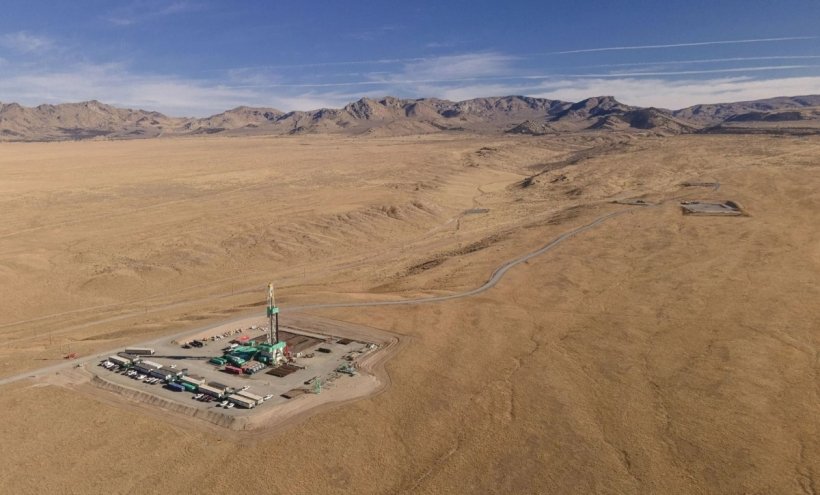
Steam rises up from Norris Geyser Basin in Yellowstone National Park as water is heated underground, a natural example of geothermal energy. (Image: Noémie Cauchon/Unsplash)
An important clean power resource lies beneath the surface of the Earth in the form of geothermal energy. Access to geothermal energy in the United States was limited to naturally occurring hotspots in the West. Now, the Biden-Harris administration is leveraging technology from the oil and gas industry to open access to geothermal energy to a wider field, including the Eastern U.S.
The limitations of geothermal energy
In contrast to wind turbines and solar panels, geothermal resources can generate electricity on a steady, 24/7 basis, just like a conventional fossil energy or nuclear power plant. With this level of performance, the geothermal industry could play a key role in the U.S. renewable energy profile. But geologic conditions have limited its reach.
Virtually all of the geothermal power plants in the country are located in California and other parts of the West, according to the U.S. Energy Information Agency. In these regions, geothermal resources are naturally located close to the surface and can be accessed with conventional technology.
“Natural geothermal systems exist in the presence of heat, permeability and fluid underground,” according to the agency.
One standout example is The Geysers, an 18-plant geothermal complex in California. The facility was first commissioned in 1960 and remains the largest geothermal complex in the world.
A helping hand from the oil and gas industry
Currently, geothermal power plants account for just 4 gigawatts of electricity in the U.S. But next-generation, cost-effective technologies could increase that number to 90 gigawatts, according to the U.S. Department of Energy.
To open up other parts of the country for geothermal production, the Department of Energy enlisted hydrofracturing technology, also known as fracking, to create artificial geothermal reservoirs called Enhanced Geothermal Systems (EGS).
Hydrofracturing involves pumping water and sand underground at high pressure to extract oil and gas from shale formations. It was linked to a wide range of public health risks and environmental hazards after coming into widespread use during the early 2000s.
Those impacts are not relevant when the process is used for geothermal development. For EGS, hydrofracturing opens up existing subsurface fractures, creates new ones or both. That process allows more fluid to circulate through the hot rock underground, according to the Department of Energy. The fluid brings heat to the surface so it can be used to generate clean, renewable electricity with existing technology.
“The ability to tap geothermal resources for electricity requires subsurface heat, water or fluid, and permeability (ability for fluid to flow through rock),” Kevin Jones, manager of the Department of Energy’s Frontier Observatory for Research in Geothermal Energy, told TriplePundit in an email. “Where those components do not exist naturally, such as in the Eastern United States, enhanced geothermal systems (EGS) can be used to create human-made geothermal reservoirs.”

An assist from the 2021 Bipartisan Infrastructure Law, too
Although hydraulic fracturing is a mature technology, its use in the geothermal industry is new and costs are relatively high. The Biden-Harris administration is supporting new, cost-cutting EGS innovations through the Enhanced Geothermal Shot program. It aims to foster a 90 percent drop in the cost of EGS by 2035, bringing it down to $45 per megawatt-hour.
Funding from the 2021 Bipartisan Infrastructure Law also provided a financial platform for EGS innovators. The law specifies that funding be provided to projects that increase production at or near existing geothermal fields in the West, expand EGS into other regions where sufficient heat is present, or demonstrate the technology in the Eastern U.S.
First steps to another new sustainable energy industry
So far, the Department of Energy’s Geothermal Technologies Office has awarded $60 million in Bipartisan Infrastructure Law funding to three pilot projects in the Western U.S. The awardees — Chevron New Energies, Fervo Energy and Mazama Energy — will demonstrate new EGS technologies in California, Utah and Oregon.
The office is now selecting awardees to share up to $14.2 million in additional funding for EGS pilot projects in the Eastern U.S. As with the first three projects, the new cohort is expected to demonstrate a variety of advanced EGS technologies, while serving as platforms for experimentation and models for best practices.
The awardees will also demonstrate how consumers and markets contribute to the design of EGS projects, particularly regarding the equity and environmental justice goals of the Biden-Harris administration. Applicants are required to submit a plan describing how they will ensure the federal funding advances energy equity, investment in America's workforce, and diversity, equity, inclusion and accessibility, Jones told 3p.
The EGS initiative is part of an overarching goal to ensure that the renewable energy transition does not overlook frontline communities that have long been burdened by the impacts of conventional energy development, Jones said. That includes creating new employment opportunities for fossil energy workers displaced by decarbonization.
“Geothermal energy also shares numerous other similarities with oil and gas, including drilling technologies, workforce skills, and subsurface exploration techniques,” Jones said.
Technology obstacles aside, the next steps will also need to address the slow pace of permitting for energy projects. Nevertheless, the Department of Energy's estimate that new geothermal technologies could bring the country’s capacity up to 90 megawatts is a timely reminder that the nation has only just begun to tap into its renewable energy resources.

Tina writes frequently for TriplePundit and other websites, with a focus on military, government and corporate sustainability, clean tech research and emerging energy technologies. She is a former Deputy Director of Public Affairs of the New York City Department of Environmental Protection, and author of books and articles on recycling and other conservation themes.














